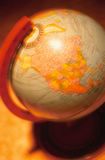The Bohai Bay Rim Economic Zone 0 comments

(P.S: Sorry for any disturbances the advertisements above may have caused you)
The Chinese economic engine has been booming for several years now, and recently it appears that their financial markets have caught up and even surpassed the fundamentals. The euphoria is worrying, but yet the fundamentals are solid, and I have highlighted several interesting development trends in the past. Here I highlight the most promising development region for the next decade.
The Bohai Bay Rim economic region is made up of Beijing, Tianjin, Hebei, Shandong and Liaoning, the so-called 3+2 area. The area has a population about one-sixth of China's total, and generates more than one-quarter of the country's total GDP. It is widely considered as among the three most important economic regions in China, together with the Pearl River Delta centering on Shenzhen and Hong Kong, and the Yangtze River Delta centering on Shanghai. The latter two have overtaken the Bohai Rim region in economic importance over the last two decades, but there are signs that foreign investments and development focus are moving northwards towards this region.
The Bohai Bay region

The key to its re-emergence is the Chinese government. China watchers essentially must watch the government moves. The country essentially still retains a strong central-planning economic legacy despite recent years of private sector-driven growth, and its importance is augmented by the fact that its central bank is just another government policy instrument and that the government has access to vast state reserves --- ie. effectively the government controls and is a source of massive liquidity. This government has a history of driving growth in specific economic zones, first in the Shenzhen SEZ after Deng Xiaoping's southern tour, and then Shanghai under former mayor/new president Jiang Zemin. Recent government initiatives, concessions and appointments indicate the Bohai Bay Rim to be the next centre of focus.
The Bohai Rim region has been traditionally well-developed in heavy industries, with strengths in ports (Tianjin), logistics (Tianjin), steel (Anyang, Shenyang), petrochemicals (Beijing, Tianjin), oil exploration (Bohai Sea). The development of the automobile, electronics and high-tech industries, and the construction of energy bases and transportation channels are emphasised for the future; all these are major sector thrusts for China as a whole (high value-add, R&D-intensive industries), suggesting that the Bohai industrial region will be the seat of major investments for years to come. This will be facilitated by the advanced communications, strong contingents of scientific and technical personnel and wealth of natural resources available in the area. China's biggest oil discovery in recent years just several weeks back in Bohai Bay is set to attract vast refinery and petrochemical investments in the region.
In particular, Tianjin is set to become China's third economic powerhouse after Shenzhen and Shanghai Pudong. Its development and integration with Beijing and Hebei Province are now a national development priority, written into China's 11th Five-Year Plan. It is the birthplace of PM Wen Jiabao. Notable foreign investors have piled into the city, including Motorola, Samsung, Matsushita Electric, Toyota, GlaxoSmithKline, Coca-Cola and Nestle. The most recent high-profile foreign investment is Airbus' first A320 aircraft manufacturing plant in China. Most foreigners see the city as a gateway to the inland regions, given its strong logistics facilitating inland communications, its deepwater ports facilitating export/import access, and its proximity to the administrative capital of Beijing. Within Tianjin, the Tianjin Binhai New Area is government-decreed to be the comprehensive systematic reform experimental area, to draw on all the abovementioned competitive strengths (gateway status, high-tech manufacturing and R&D, shipping & logistics) into one core area; this will be the one to watch.
The emergence of Tianjin as a financial centre will be another development to watch. Its mayor Dai Xianglong is a highly-respected former central bank governor, and his appointment to Tianjin was a sign of (good) things to come. The recently-planned Bohai Bank will be the first national bank approved in a decade. There are also plans to set up China's third stock exchange, still pending approval. A vibrant financial sector will be important in stimulating the growth of a services economy.
Companies with exposure to this development region, set to become China's third coastal megalopolis within the next few years, should do well. Firstly, there will be government incentives to stimulate new investments. Secondly, there will be a boom in foreign/domestic investments that provide critical mass and drive needs for various supporting industries/services. Thirdly, consumption expenditure is headed for robust growth as the population increases and becomes more affluent.
Bottomline is, you can't go wrong betting along with the Chinese government.
References:
(1) Apr 2006: Tianjin at a glance
(2) Oct 2006: Dai Xianglong's speech on WICO forum
(3) GIWA regional definition: Bohai Sea
(4) People's Daily report July 2005: Tianjin Binhai New District- new engine of Bohai Bay-rim

0 Comments:
Post a Comment
<< Home